Wooden-Baseball-Parks......? Yes Wooden Baseball Parks....!
Some Of Them Literally Caught Fire..
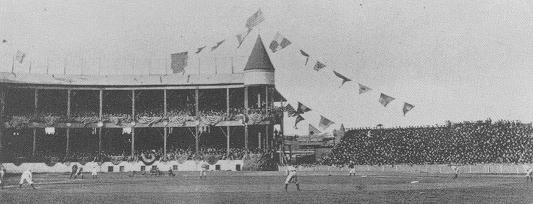
Wooden-Baseball-Parks are the yard sticks used in judging every baseball stadiums that has been build. The first professional baseball venues were large wooden-baseball-parks with seats mounted on wood platforms. Although known for being constructed out of wood, they featured iron columns for better support.
As the game of Baseball grew to become a professional sport, team owners were very cost conscious in the construction of these new baseball stadiums. Wood was a much more cost effective building material and highly favored as the game developed.
These Wooden-Baseball-parks had few amenities, when compared to today's stadiums, but were quite glorious for their day.
However the heavy use of wood in these first baseball stadiums did have its drawback. As the wood aged it would dry out and many of these early structures caught fire and burned down.
While there is, still, an ongoing debate over the origins of the game of Baseball, history makes it clear where the growth of Baseball in America actually took place.
These early, All Wooden Structures, were the precursor to the Modern Baseball Parks that were soon to come.
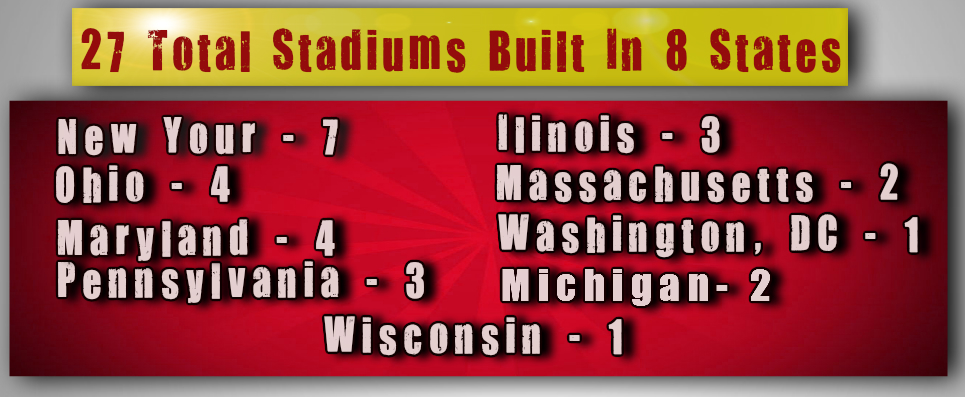
Wooden-Baseball-Parks;
1871-1902
South End Grounds
Exposition Park
Eastern Park
American League Park
Exposition Park
Bennett Park
Columbia Park
Hilltop Park
Huntington Av. Grounds
Kennard Street Park
League Park
Lloyd Street Grounds
National League Park
Baker Bowl
Orioles Park l
Orioles Park ll
Orioles Park lll
Orioles Park lV
Palace of the Fans
Polo Grounds l
Polo Grounds ll
Polo Grounds lll
Recreation Park
Robinson Field
South Side Park
Washington Park l
Washington Park ll
West Side Park l
West Side Park ll
Boston, Massachusetts
Pittsburgh, PA
Brooklyn, New York
Pittsburgh, PA.
Detroit Michigan
Washington D.C.
Philadelphia, PA.
Manhattan, NY.
Boston, Massachusetts
Cleveland, Ohio
Cleveland, Ohio
Milwaukee, Wisconsin
Cleveland, Ohio
Philadelphia, PA.
Baltimore, Maryland
Baltimore, Maryland
Baltimore, Maryland
Baltimore, Maryland
Cincinnati, Ohio
Manhattan, NY.
Manhattan, NY
Manhattan, NY
Detroit, Michigan
St. Louis, Missouri
Chicago, Illinois
Brooklyn, NY
Brooklyn, NY
Chicago, Illinois
Chicago, Illinois
1871
1890
1890
1891
1896
1901
1901
1903
1901
1879
1891
1895
1887
1887
1882
1890
1891
1901
1902
1880
1889
1890
1881
1893
1893
1883
1898
1885
1893
Let's take a look at Four of these early Wooden-baseball-parks and take a stroll down memory lane.
South End Grounds;
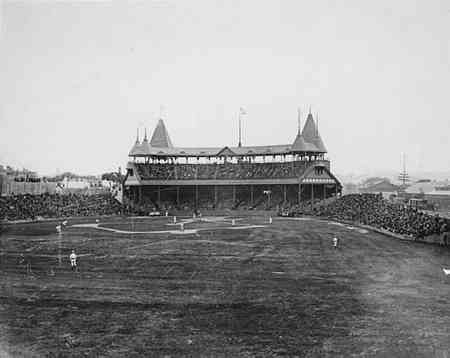
The South End Ground was built in Boston Massachusetts. This all wooden-baseball-stadium opened in 1871 and served as the home for the Boston club in the National Association and the National League from 1871 to 1914. The South End Grounds was rebuilt twice during its lifetime, once by choice and later by necessity. South End Grounds was one of the first Wooden-baseball-parks. Because of is expansive center field dimensions it was often refereed to as a scaled down Polo Grounds.
- Opened May 16, 1871
- Closed August 11, 1914
- Seating Capillarity 6880 (1880)
Field Dimensions,
- Left Field-250'
- Center Field-445'
- Left Center-440'
- Right Center-440'
- Right Field-255'
Polo Grounds
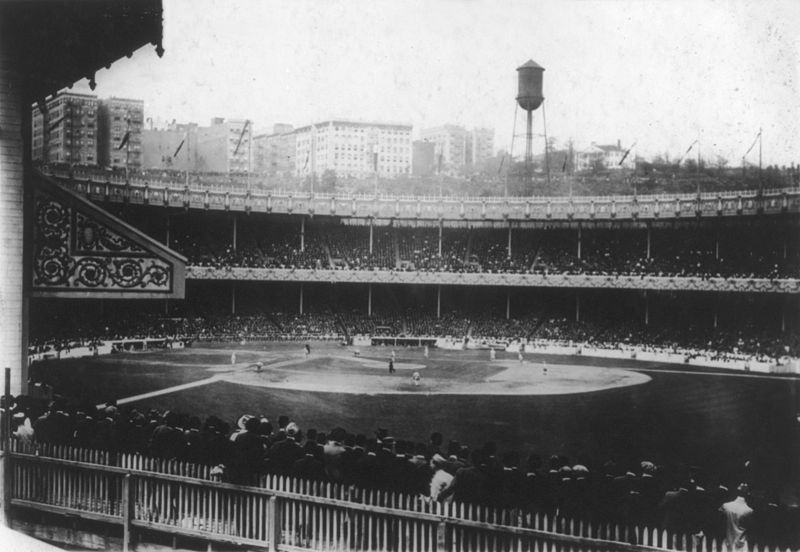
The Original Polo Grounds was built in 1876 and as one of the early wooden-Baseball-Parks was far ahead of its time. The Polo Ground may have been the first Multi-Use stadiums built. The Polo Grounds name was given to three different stadiums that were built in Upper Manhattan, New York City. This wooden-Baseball-Park was used by professional teams in both baseball and American Football from 1880 until 1963.
In baseball it served as home for the New York Metropolitans' (1880-1885, New York Giants (1883-1957, New York Yankees (1912-1922) and the New York Mets' in the first two seasons of 1962-1963.
On Friday April 14th, 1911 the horseshoe shaped stadium was consumed by fire. Being constructed from mostly wood the fire raced through the stadium leaving only the steel uprights in place.
- Opened-April 19, 1890
- Closed-December 1963
- Capacity-34,000 (1911) 55,000 (1923)
- Demolished-April 10, 1964
- Owner-New York Giants
- Operated-New York Giants
- Field Dimensions:
- Left Field-279'
- Left Center-450'
- Center Field-483'
- Right Center-449'
- Right Field-258'
Aftermath of the 1911 Fire.
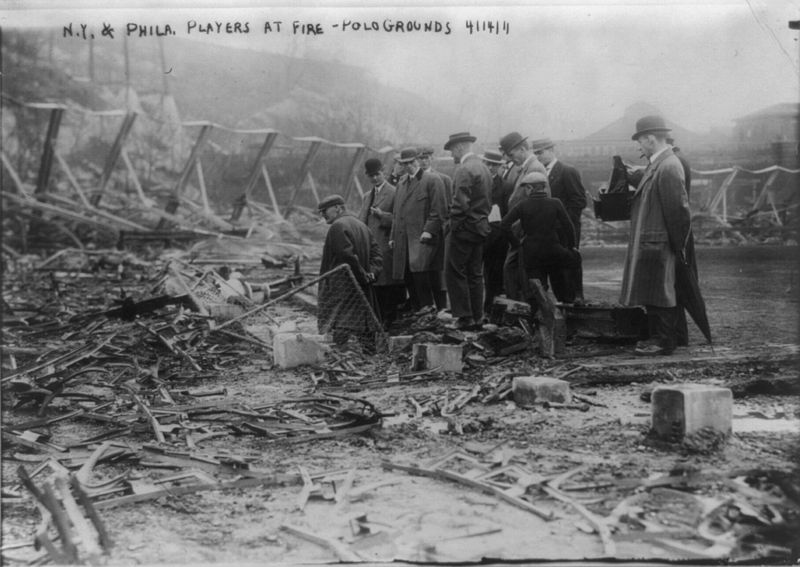
National League Park
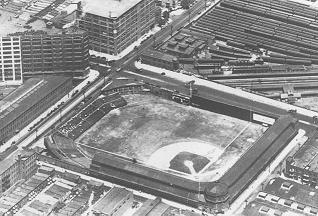
Built in 1887 National League Park was heralded as a State-of-Arts stadium. This Wooden baseball Stadium was constructed at a cost of $80,000 and it had a seating capillarity of 12,500. Initially known as Philadelphia Park or Philadelphia Base Ball Grounds it was later named Baker Bowl.
The Baker Bowl in Philadelphia was the first park to be built with steel and brick rather than wood as its primary material. It was considered to be the forerunner of what was called the "Jewel Box" ballparks.
Field Dimensions;
- Built-April 30,1887
- Closed-June 30, 1938
- Demolished-1950
- Left Field-341'
- Center Field-408
- Right Center-300'
- Right Field-208'
- Owners-Philadelphia Phillies
- Operated-Philadelphia Phillies
Exposition Park
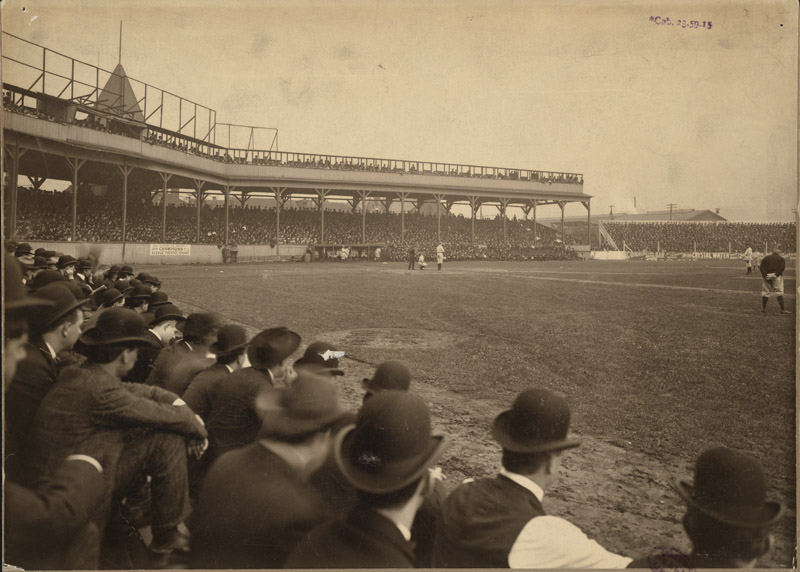
Built in 1890 This Baseball-park was built as home of the Pittsburgh Burghers of the Players' League. The Pirates played games at this stadium from 1891 to 1909. In 1903, Exposition Park was the first National League ball part to host a World Series game.
Named for other "expositions" that would be shown there, including horse racing and circuses, it was the first venue in Pittsburgh that hosted baseball.[3]
In 1882, the Pittsburgh Pirates began play at Exposition Park, however, after one season a fire and flooding of the field from the nearby Allegheny River forced a second park to be built.[4] Despite the flooding of the first stadium, construction Exposition Park II was, again, built close to the River.
Exposition Park was built in Allegheny, Pennsylvania—which was annexed by the city of Pittsburgh and later became known as the North Side—along the Allegheny River.
Field Dimensions;
- Opened-1890
- Closed-1909
- Demolished-1915
- Located-Pittsburgh, Pennsylvania
- Capacity-16,000
- Field Dimensions;
- Left Field-400'
- Center Field-450'
- Right Field-400'
Wooden Baseball Fields
Do you have a great story about this? Why not Share it!
What Other Visitors Have Said
Click below to see contributions from other visitors to this page...
Oldest athletic field or park that ever hosted an MLB home team and world series. 




League Park in Cleveland Oh is still in existence and is still an actual operating baseball park and has been used as an athletic field continuously …
Old Wooden Stadiums Still in Use Today 




Kiger Stadium in Klamath Falls, Oregon is thought to be one of the remaining wooden baseball stadiums still in use today in the United States. The stadium …



New! Comments
Have your say about what you just read! Leave me a comment in the box below.